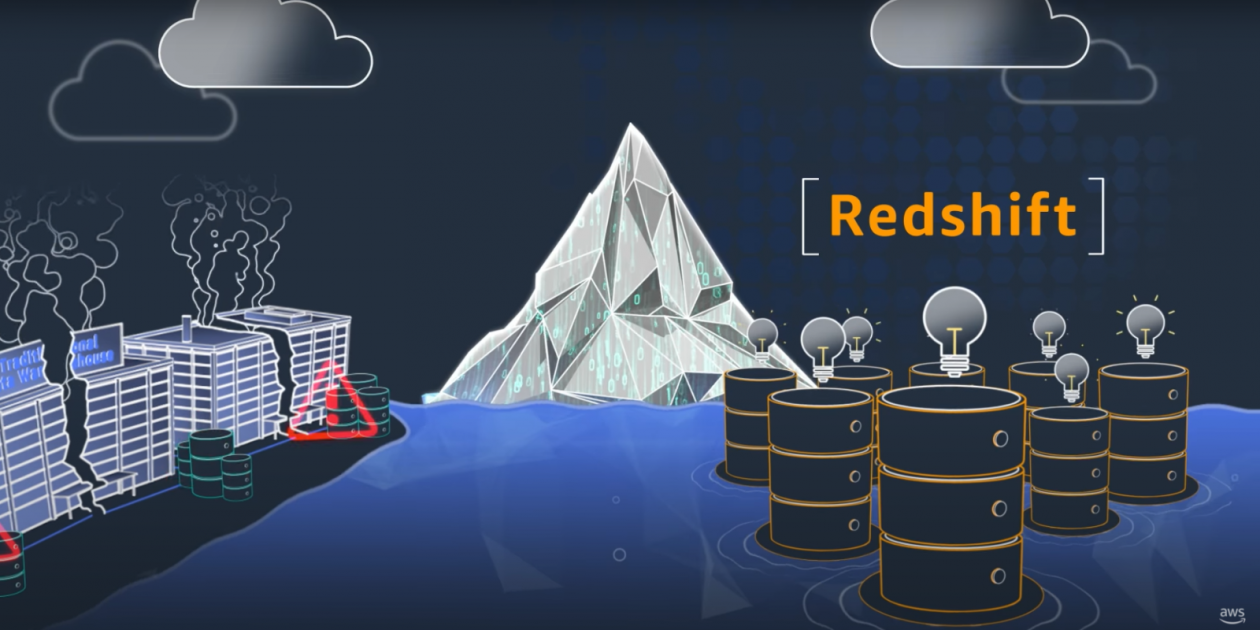A data warehouse is a data storage centre that collects data from different resources. Raw data collected from the resources are transformed into useful information and presented in the form of reports to users. These reports are then used to perform daily tasks by the users.
Traditional data warehouses existed for a very long time and posed different challenges. It is very expensive to set up and run a traditional data warehouse from scratch. The size of the data size is directly proportional to the cost of infrastructure, in turn demanding throughput planning and commitment from the management. Amazon Redshift, a modern data warehouse, has helped many firms to overcome these challenges using its unique architecture and business model.
Amazon Redshift, a flagship product of the cloud computing platform – Amazon Web Services, is a modern data warehouse product built on a sophisticated warehouse, Massive Parallel Processing architecture, and column-based database architecture. The product is highly reliable, scalable, and time & cost-effective in terms of data analysis. It eliminates several boring tasks such as taking continuous backup to avoid data loss, database administration tasks, and also encrypts data through its built-in security features.
What makes Amazon Redshift stand out?

Traditional data warehouses need continuous infra upgrades, owing to difficulties in setting up and running data warehouses in a short duration abreast increases in the data size. It takes only minutes to create a cluster in Amazon Redshift using the console. Amazon Redshift enables a requirement-specific, dynamic scaling of the infrastructure, which in turn has made it a highly reliable and fast performing solution to many companies.
Unique Architecture
Traditional data warehouses use row-based database architecture, which curtails the database performances. Architects, while querying should take extra care to reduce the time taken, failing which, time taken for a few columns might increase. Amazon Redshift uses column-based database architecture to compress the data, free up memory for data analysis, and improve query performance.
Multi-Node Cluster
Amazon Redshift uses Massive Parallel Processing architecture to break large data sets into chunks and process the data. The design creates a lead node that assigns chunks to several compute nodes. The lead node gathers results from the individual nodes and presents it to the client application. The client application reads the data directly from Amazon Redshift, enabling analysts to perform tasks using this data.
Smart Compilation
The platform distributes the compiled code across the cluster after the query is compiled. It eliminates additional processing time, allowing quicker execution.
High Security
Amazon Redshift is equipped very well to protect the data. It has in-built security features like Virtual Private Cloud and data encryption to secure data. It also has multiple access controls to restrict inbound and outbound accessibility.
Low cost
Amazon Redshift does not demand upfront costs. It uses pay as you go model, and contract commitments can be eliminated anytime. Pricing starts from as low as $0.25/hour for a 160GB DC1 and $0.85/hour for a larger node 2TB version. Studies suggest that it only takes 1/10th of the total cost of the traditional on-premise warehouse to set up Amazon Redshift.
Managing Data Stack
Amazon Redshift has data integration, BI, system integration, and consulting partners to load or extract data for analytics. Data Integration partners help to integrate data such as ETL/ELT and data modelling. BI partners help to extract reports, analyze data, and visualize data for a meaningful purpose. System integration and consulting partners provide expert opinions and training on Amazon Redshift.
Amazon Redshift is changing the landscape of the data warehouse industry without compromising on features and performance. The customer base of Amazon Redshift ranges from large corporations that consume multi-petabyte to start-ups that consume a few hundred gigabytes. With the dramatically declining costs of setting up data warehouse systems, numerous firms are getting pulled towards Amazon Redshift.
When would you want to use Amazon Redshift?
Whenever there is a large amount of data to analyze, Amazon Redshift is used. To be a viable solution, Redshift requires at least a petabyte-sized data set (1015 bytes). Redshift’s MPP technology can only be used at that scale. There is more to data use than just the size of it.
Real-time analytics
In most companies, the decision-making process is based on real-time data, and solutions are often implemented quickly. Uber, for instance, makes decisions using data both from the past and from the present. A whole host of data has to be considered, such as surge pricing, where drivers should go, what route to take, traffic expected, etc.
A company like Uber, which has operations around the world, has to make thousands of decisions every minute. In order to make these decisions and ensure smooth operations, the current stream of data and historical data must be analyzed. For such instances, Redshift can be used as MPP technology to improve the speed of accessing and processing data.
Combining multiple data sources
The goal of data processing is to gain insights from structured, semi-structured, and/or unstructured data. Tools for traditional business intelligence are inadequate for analyzing data from various sources with different structures. This is where Amazon Redshift comes in handy.
Business intelligence
It takes a lot of people to manage data from an organization. Even if they are not data scientists, at least some of them know enough to get started right away.
Using Redshift for reporting purposes and getting detailed information is a great benefit. A highly functional dashboard and automated reporting can be generated using Amazon’s Redshift database. AWS QuickSight and third-party tools developed by AWS Partners are compatible with it.
Required Reading





















